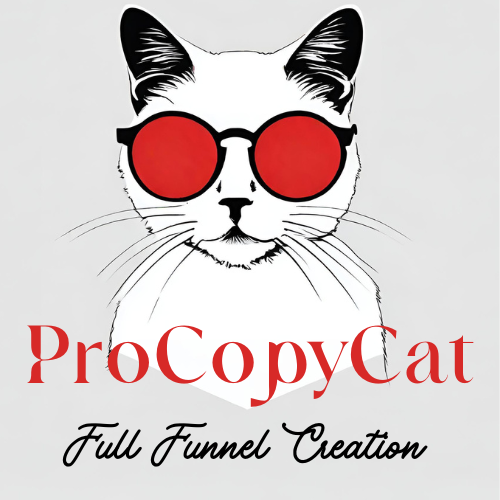How I Train AI to Write Like Me (Without Getting Crushed by Google’s AI Crackdown)
Everybody wants it done yesterday. And in this case, it is content. There’s a common misconception amongst business owners — that the faster and more content you publish, the more Google will love you. But to Google, that’s some creepy-ass stalker behavior.
To make matters even more FUBAR, we now have people pushing LLMs, promising that with content at scale, you too, can catch Google’s amorous eye. Too many are falling for it and the internet is going to turn into the (AI-driven) Great Pacific Garbage Patch.
In reality, you’re actually going to catch Google’s side-eye if you mass-produce AI content. Google has come right out and said it.
Don’t believe me? Check it here 👇
TL;DR?
Google’s cracking down hard on generic, mass-produced AI content. If you’re engaging in some black-hat GEO tactics, good luck surviving the penalty purge.
The fix? Stop feeding your AI context-starved prompts and zodiac-sign personas. Train it with strategic, real-talk brand identity inputs — authentic customer language, actual sales call insights, and clearly defined buyer benefits.
Use it to help your marketing team and make their jobs easier so they don’t dream of disappearing into the woods and never opening your God-forsaken, nausea-inducing Slack channel again.
Google’s AI crackdown and why scaling has to be legit.
My blog, How to Train AI to Write Like You (and Sell Like Your Best Rep), took off for one simple reason: It called 💩 on generic, prompt-heavy AI content. People resonated because no one wants to sound like a robot with a flat affect who has lost the will to live. The uncanny value gives people the ick.
If you’ve been hearing a giant whooshing sound, that’s the rumor flying around and the robot chicken has finally come home to roost. Google has officially had it with mass-produced, generic and unhelpful AI slop. Google calls it scaled content abuse. They’ve issued manual penalties to sites caught generating huge amounts of unoriginal, thinly paraphrased, and straight-up garbage AI content.
If you're curious (or skeptical), marketer and SEO expert Edward Sturm just dropped an excellent podcast episode breaking this down.
To save you a click (but seriously, go listen, it’s a great video), here's the gist:
- Manual penalties: Google is actively hitting sites with manual penalties for churning out low-value AI content at unnatural publishing speeds. If you suddenly crank out heaps of pages overnight, Google sees that as rather sus and worthy of penalty.
- Quality rater guidelines update: Google's Quality Raters (think human Google algorithm judges) now rate "low-value, mass-produced AI content" at the lowest quality. They're looking for originality, depth, and actual helpfulness — not recycled, paraphrased Wikipedia entries and articles that say a whole lotta nuffin.
Here’s what Google specifically hates:
- Unnatural publishing velocity (going from a few blogs to hundreds in days. Big red flag and the carnival ain't in town).
- Generic, thinly-veiled paraphrased content that adds zero new insights, authenticity, or value.
Let's get something straight.
I am not, never have, and never will be advocating that you flood the internet with low-quality, keyword-stuffed garbage. My clients come to me because they're already stretched so thin, they can barely manage a regular posting schedule of one blog a week (or even a month).
When I say "scale," what I mean is strategic, consistent, and sustainable publishing that genuinely benefits your audience and your business.
As a professional writer, tools like ChatGPT have improved my workflow by enabling me to deliver far deeper, richer content strategies, detailed brand identities, and nuanced reports faster. What used to take me a month now takes about two weeks. The difference? More clarity and more depth without a loss in quality or originality.
And you'll also notice that these things still take time. Anything worth doing takes time. It's like a law of the universe and there's simply no way around it. While you can get faster with LLMs, it's comparatively so.
Google's crackdown isn't against AI itself, but against its misuse.
AI, when used as a strategic tool in the hands of a skilled expert, and that's trained well using authentic brand inputs, real customer insights, and clear messaging frameworks, helps you genuinely "scale" your content in a meaningful way.
But reckless AI-fueled publishing at warp speed? That's putting your entire brand at risk.
If you’re going to use AI for creating content, you need a verbal brand identity.
A verbal brand identity isn’t another pointless PDF gathering digital dust in your Drive. It’s a messaging blueprint that translates real customer desires, actual sales insights, and your authentic brand voice into compelling, actionable content.
- Hook-driven: Your messaging grabs people by the emotional jugular and stops their thumb mid-scroll.
- Buyer-focused: Your customers actually understand what you’re selling, why it matters, and why it's worth their money.
- Conversion-engineered: Your messaging moves prospects from “this sure is boring” to “omg you understand me better than my mother.”
Compare this to the generic AI slop Google just publicly denounced (and penalized). Google's crackdown explicitly targets thin, generic content churned out at unnatural speeds, which is exactly the opposite of what a verbal brand identity can deliver when paired with nuanced, strategic LLM use.
Relying solely on AI prompts to churn out content isn’t the most effective way to use AI nor is it the most efficient use of your time. Prompts alone won't give you compelling, brand-specific content because they're fundamentally lacking one thing: strategic depth.
Inputting an LLM with
authenticity
will give you improved outputs, reducing the time you'd need to spend editing, fact-checking, and eliminating corpo-smooth uncanny valley voice.
And as a very important side note, you still have to do this! Even if with the right inputs, the outputs still require human oversight.
Verbal brand identities clearly define your buyer’s real needs, questions, and motivations. Your content naturally meets Google's strict criteria:
- Is the product/service clearly understandable? (Hint: Customers don’t buy stuff they can't quickly wrap their heads around.)
- Is the value obviously worth the price? (No one’s shelling out cash if they don’t immediately see why it’s worth every penny.)
- Will customers feel smart and confident choosing your brand? (Because nobody likes to feel dumb, especially when spending money.)

Training AI to Sound Like You in 3 Steps
Step 1: Curate High-Quality Inputs (The "Verbal Brand Identity" Method)
Your AI's content quality directly mirrors what you feed it. Garbage in, garbage out. Give it gold:
- Real customer language: Actual pain points, frustrations, and desires your customers express on sales calls, in testimonials, through in-depth research, social listening, etc.
- Authentic sales insights: Use the phrases and selling points that actually close deals — not what corporate or your grandma (who is not a target customer) thinks closes deals.
- Clear founder/team POV: Your unique angle and authentic beliefs about why your brand even exists.
- Strategic messaging frameworks: Clearly defined messages that address real buyer motivations: what they care about, why it matters, and why choosing you is a no-brainer.
Step 2: Gradual Content Scaling (Avoid Google's Velocity Red Flags)
Remember Google's creepy-stalker radar? It gets triggered when your site suddenly sprouts 1,000 pages overnight. To safely scale your content production, do it methodically:
- Start slowly: if you’re publishing 10 pages this month, aim for 25–30 next month — not 200.
- Gradually ramp up: build a natural content rhythm, so Google's algorithms don't flag your brand as suspicious.
- Keep it real: Continue focusing on organic link-building, authentic engagement, and genuine traffic. Google rewards real brand activity, not artificial spikes.
Step 3: Humanize AI-Generated Outputs
Yes, AI is smart (like a high IQ 7th grader with no real-world experience). But sometimes it still writes like it's auditioning to be the next techbro meme. Before publishing, give your content a human touch-up:
- Kill the buzzwords and emoji spam: Nobody needs content that “🚀 skyrockets synergistic scalability 🚀.”
- Manual proofread: Catch hallucinations, weird sentences, or awkward phrasing. (AI isn't great at nuance or context unless you give it enough context and edit for nuance.)
- Add originality: Inject your unique experiences, insights, examples, and relevant multimedia to create content no one else can replicate.
Real talk: How I use AI as a professional writer.
“Nice sermon, lady. But what does using AI for content creation actually look like?”
Let’s take a look behind the curtain at just one example of how I, a professional writer and content-systems architect, use AI to create better content faster, and why this matters for small marketing teams.

My workflow before and after AI
Before AI:
Crafting detailed brand strategies, robust content calendars, and high-quality blog content took forever. I'd spend weeks buried in research, reports, caffeine and pernicious hair loss, turning client calls, notes, and scattered insights into actionable strategy. It worked, but it was slow, expensive, and I had less time so couldn’t help more clients.
After AI (no, not a content factory):
Now, using tools like ChatGPT, I start every project with a clear, structured framework rooted in a
verbal brand identity that leverages actual customer pain points, real sales-call insights, and the authentic voice and perspective of the client’s brand.
Here's what that looks like:
- Step 1 (Brand Input Gathering):
I start by pulling together real customer language, sales-call phrases, and genuine founder insights. - Step 2 (Strategic Prompting):
Using this rich input, I train custom LLMs (think ChatGPT, but smarter and actually useful) to create initial outlines, first drafts, or structured strategic documents. - Step 3 (The Human Edit):
Then — and this is key — I manually refine every output, injecting nuance, deeper insights, and genuine originality. No emojis, buzzwords, or "game-changing" clichés because 🤮
The result is nuanced, detailed strategies, thought leadership content, and reports delivered in two weeks rather than four and with greater clarity and actionable insight included.
Why small marketing teams need this
Small marketing teams are perpetually swamped. They're juggling blogs, social posts, email campaigns, reports, and praying for a clone. AI, used strategically, becomes a marketer’s best assistant:
- It frees up time for high-value, creative thinking.
- It accelerates your content-production cycles without sacrificing quality.
- It turns scattered team insights into clear, unified messaging consistently.
In other words, it gives small, resource-stretched teams the ability to scale strategically (there's that magic word again) without burning out, publishing garbage, or ending up on Google's blacklist.
So when I say "scale," don't picture a ton of articles with your byline flooding the web. Picture your team finally breathing easy — publishing consistent, high-quality content that makes Google and your audience happy.
The long game
always pays off.
If you’ve stuck around this long, congrats. You officially give a shit about doing content right. So let’s tie a nice, strategic bow on all of this:
Google isn't declaring war on AI. It's just fed up with lazy, mass-produced garbage. AI itself isn’t the villain; reckless misuse of it is.
When I talk about scaling content, I'm not advocating for mass-produced, no-IQ points-were-in-the-writer’s-room-when-it-was-made content creation. I'm talking about strategic scaling: content built around a clear, actionable verbal brand identity that aligns with what your audience actually cares about.
Used correctly, AI tools like ChatGPT aren't soul-sucking robo-writers. They’re productivity engines, sanity-savers, and your ticket to faster, smarter, and deeper content.
- Train your AI strategically.
- Publish content consistently (not manically).
- Respect Google's guidelines by being original, valuable, and real.
Do this, and you'll keep Google happy, your customers hooked, your team sane, and your website off the penalty hit list.
Want help putting this into action? Let's chat.
